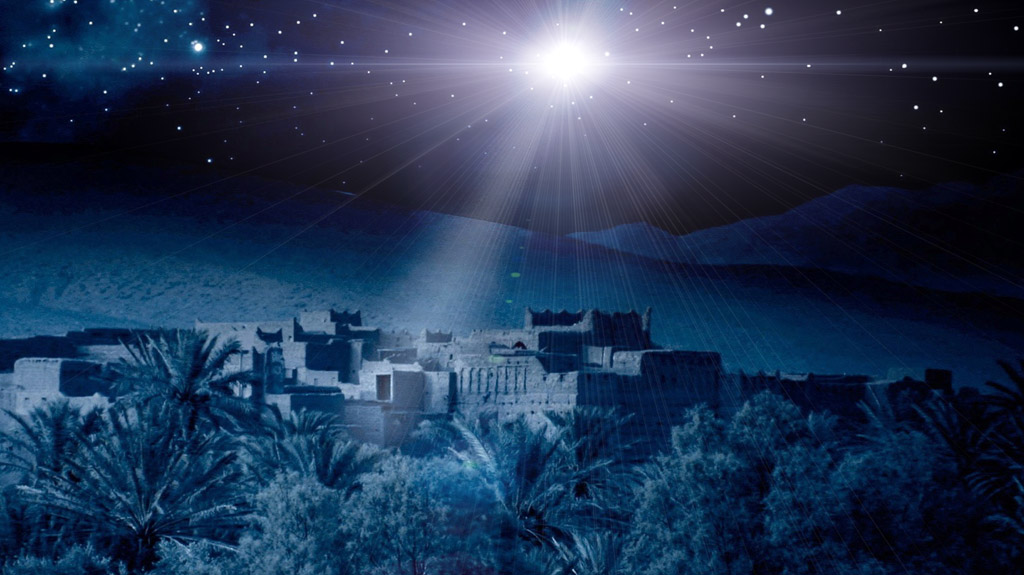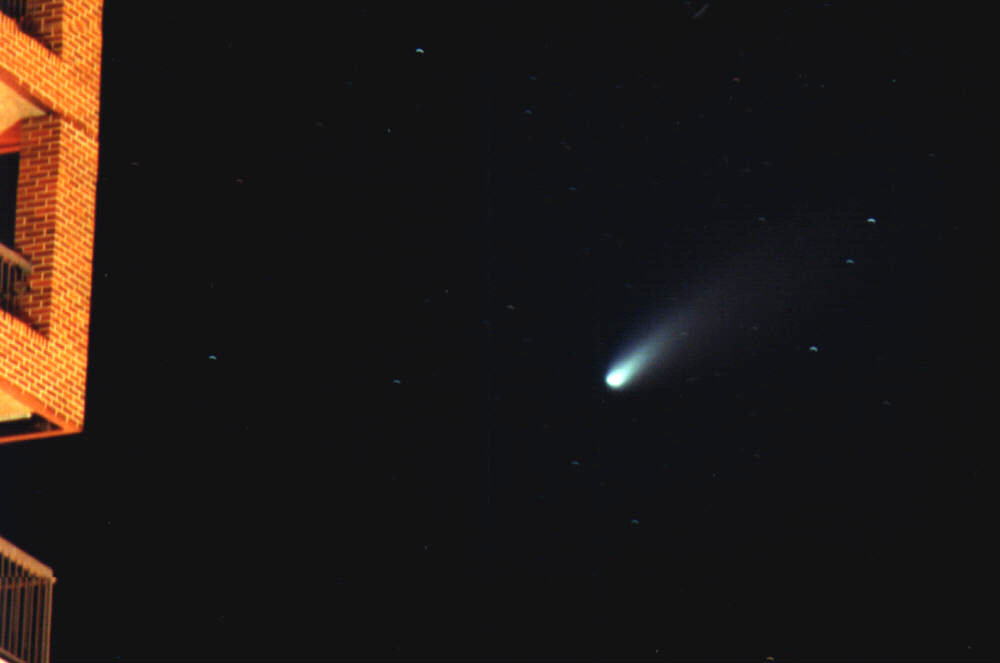 HAC – image – courtesy of and used with permission – www.freebibleimages.org – copyright LUMO Project
HAC – image – courtesy of and used with permission – www.freebibleimages.org – copyright LUMO Project
The Star of Bethlehem – have you ever wondered what it was or, what it would have looked like? Today, too many are quick to dismiss it as a nice story, or in the case of many secular scholars, a myth about Jesus’ birth that would parallel the older stories of the births of the pagan gods, in order to make the new religion more acceptable to the pagans. As something of an amateur astronomy buff, the Star has always fascinated me, especially as to what in the sky could have behaved as described in the Gospels. Recently I came across a book called “The Great Christ Comet” by Colin R. Nicholl, (PhD, University of Cambridge and professor of New Testament Studies at Gordon-Conwell Theological Seminary). In it, he analyzes the events described in the Gospels about the Star and the Magi, and then looks at the various astronomical theories that have arisen.
He concludes that the Star was a retrograde, narrowly inclined, long period comet, based on the following observations:
- Long period of visibility -This is demonstrated by the duration of the apparition and particularly how long prior to perihelion the comet first became visible to the naked eye, by the great size of the cometary coma shortly after perihelion when it was in the eastern sky, and by the length of its tail at that time and some weeks later when it stood over the house where Jesus was.
- Narrow inclination. The comet was narrowly inclined to the ecliptic and probably orbited within the zodiacal band, rendering it of more astrological significance to the Magi. Among other things, that the comet set with its tail stretching upwards, when the Magi were in Bethlehem, is suggestive of narrow inclination. Narrowly inclined comets sport relatively straight dust tails, from Earth’s perspective, as opposed to the more curved dust tails of steeply inclined comets.
- Retrograde. The comet was unquestionably retrograde (moving in a clockwise direction, from the vantage point of the north pole). This is indicated by the fact that it increased in size within Virgo and, having left the eastern sky, quickly progressed to the southern evening sky.
- Heliacal rising. The Magi saw the cometary coma rise heliacally in the eastern sky, meaning that it had been in conjunction with the Sun prior to its reappearance. The retrograde comet was emerging from the Sun around the time of perihelion (when a comet’s brightness peaks). During this time the coma was an especially bright morning star and was observable in the northern hemisphere (specifically in the Near East). The comet as a whole probably looked like a scepter at this time.
- Notable apparent magnitude. Since dim comets would not be visible low on the horizon at sunrise or remain observable when very large, and since this comet is regarded as a great light shining into the deep darkness, the Christ Comet must have had extraordinary apparent magnitude values. It was probably a daylight object around perihelion.
- From Babylon to Jerusalem. Having witnessed the entire celestial nativity drama, the Magi no doubt soon began their journey to Judea. The comet, having switched quickly from the morning to the evening/night sky, probably remained visible to them throughout their journey. It is likely that, every night, the comet moved toward and over the western horizon, seeming to urge them onward to Jerusalem.
- Very much like Comet Hale-Bopp – The fact that the Christ Comet was seen by the naked eye so long before perihelion is reminiscent of C/1995 O1 (Hale-Bopp). Hale-Bopp was first seen 10½ months before perihelion, when it was still 4.37 AU from the Sun. It has been calculated that Hale-Bopp started forming its coma roughly 18 AU from the Sun.25 The Bethlehem Star comet was first observed on or before December 10–17, 7 BC, about 9½ months before perihelion, when it was 4.71–4.63 AU from the Sun. Its coma probably began to form out beyond the orbit of Uranus (20 AU from the Sun). Comets such as Hale-Bopp and the Magi’s Star begin degassing so long before perihelion because they contain relatively high volumes of extremely volatile materials such as nitrogen, carbon monoxide, and methane.26 These materials begin reacting to the Sun at long distances from the Sun, whereas water-ice begins to degas only when within 3 AU.27
Indeed, if one looks at photos of Hale-Bopp, such as this one I took, one can see how the tail would have looked like a scepter or pointer.
I would tend to agree with Dr.Nicholl, in that the most logical explanation for the Star is a comet.
One other point of note – there is a Roman coin from the province of Antioch that dates from around 6 AD. It shows a ram looking over its shoulder at a “star”.
Dr. Michael Molnar, a Christian astronomer, published “The Star of Bethlehem-The Legacy of the Magi.” His findings included the meaning behind the “Ram and Star” coins from Antioch.Dr.Molnar concluded that the design was meant to recognize the birth of the Messiah in Judaea and that His birth occurred on April 17, 6 BC,based on an unusual array of the planets occurred in Aries during 6 BC. Aries had long been recognized as the astrological symbol for Judea. This alignment also corresponds with the scriptural reference to the Star rising in the East, which would have been very significant the the Magi, who were, in all likelihood Babylonian priest-astronomers, tasked with observing and recording the stars with an intent to interpret events, present and future.
HAC for St.Bernard’s Parish.

